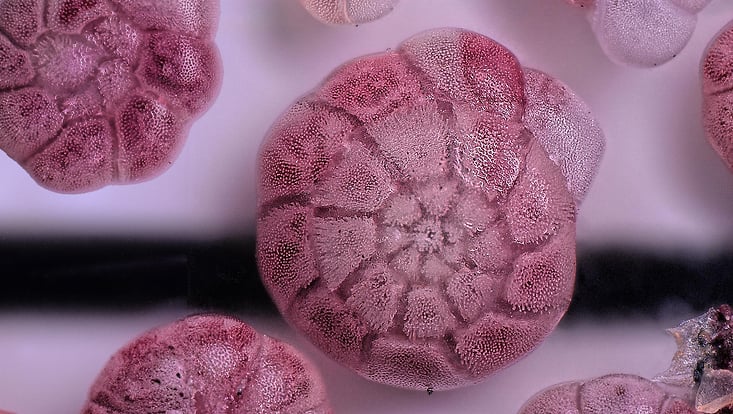15 January 2025
Tiny organisms buffer fertilizers in the world’s oceansSingle-Celled Organisms with Super Powers

Photo: UHH/Glock
Phosphate is one of the major components of fertilizers. It fosters the growth of many useful plants, but it unleashes its effects not only in the fields but in our waters. It makes its way to oceans via our rivers and it can ultimately tip entire regions. Fertilizers can be seen in the ocean, for example, when you notice a proliferation of—sometimes toxic—algae that harms the entire ecosystem.
In 2020, Dr. Nicolaas Glock was the first to discover, and almost by accident, that foraminifera absorb huge amounts of phosphate. Now the research associate in the Department of Earth System Sciences at the University of Hamburg has studied the distribution of this property among single-celled organisms. To analyze live foraminifera on the ocean floor, he was joined by colleagues from Japan, Canada, and the GOEMAR Helmholtz Centre for Ocean Research in Kiel. The organisms hail from the German Wadden Sea, Peruvian and Japanese coastal waters, the Canadian Bedford Basin, and from the 2,000-meter depths of the mid-Atlantic Ridge.
In the lab, the research team subjected them to shock-freezing, broke them, and x-rayed them. The result: all species under consideration had stored phosphate. “And because these single-celled organisms are so widespread and there are so many of them, the quantities of phosphate that they can absorb overall are very, very big,” said Glock, who headed the study.
For the German Wadden Sea and a few foraminifera species, Glock’s team did exact calculations: The Ammonia confertistesta alone store 5 percent of the phosphate in Germany that ends up every year on German pastures. This means foraminifera are an important basin for this matter: without them, the oceans would have even more harmful phosphate. Looking at the southern North Sea and Peru, Glock’s team discovered the organismas delay the human phosphate contribution to the ocean by one month. He also suspects that the Baltic Sea, compared to other oceans, may be “overfertilized” because it houses fewer foraminifera. Baltic waters are simply too sweet for them.
“The single-celled creatures cannot, unfortunately, break down the phosphate,” Glock explains. “They store it as an energy reserve and, if necessary, re-release it.” Only when the foraminifera die and form new sediments do they remove some of the phosphate from the water permanently.
Nature: Widespread occurrence and relevance of phosphate storage in foraminifera. By Nicolaas Glock, Julien Richirt, Christian Woehle, Christopher Algar, Maria Armstrong, Daniela Eichner, Hanna Firrincieli, Akiko Makabe, Anjaly Govindankutty Menon, Yoshiyuki Ishitani, Thomas Hackl, Raphaël Hubert-Huard, Markus Kienast, Yvonne Milker, André Mutzberg, Sha Ni, Satoshi Okada, Subhadeep Rakshit, Gerhard Schmiedl, Zvi Steiner, Akihiro Tame, Zhouling Zhang, and Hidetaka Nomaki. DOI: 10.1038/ s41586 -024 -08431 -8

